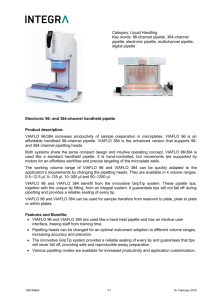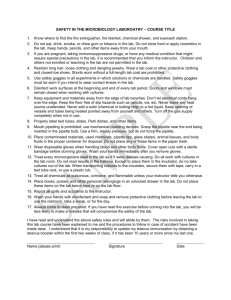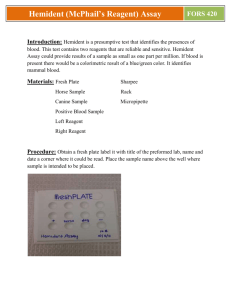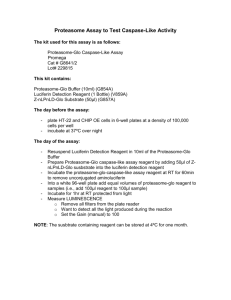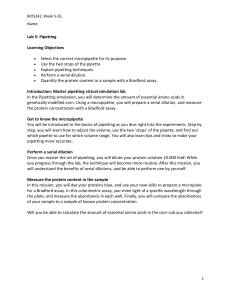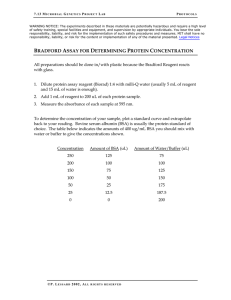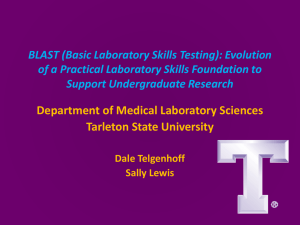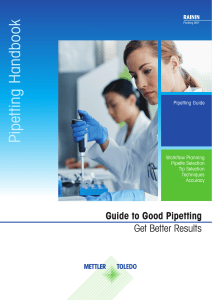Important points for excellent precision in Human Apo B
advertisement
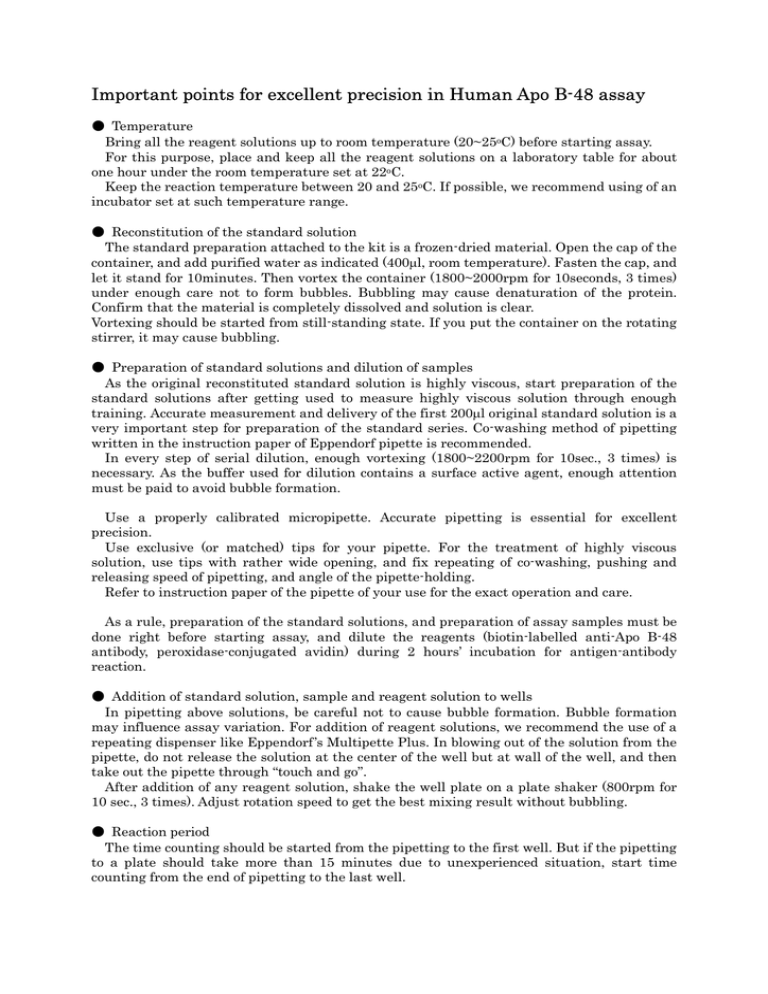
Important points for excellent precision in Human Apo B-48 assay ● Temperature Bring all the reagent solutions up to room temperature (20~25oC) before starting assay. For this purpose, place and keep all the reagent solutions on a laboratory table for about one hour under the room temperature set at 22oC. Keep the reaction temperature between 20 and 25oC. If possible, we recommend using of an incubator set at such temperature range. ● Reconstitution of the standard solution The standard preparation attached to the kit is a frozen-dried material. Open the cap of the container, and add purified water as indicated (400µl, room temperature). Fasten the cap, and let it stand for 10minutes. Then vortex the container (1800~2000rpm for 10seconds, 3 times) under enough care not to form bubbles. Bubbling may cause denaturation of the protein. Confirm that the material is completely dissolved and solution is clear. Vortexing should be started from still-standing state. If you put the container on the rotating stirrer, it may cause bubbling. ● Preparation of standard solutions and dilution of samples As the original reconstituted standard solution is highly viscous, start preparation of the standard solutions after getting used to measure highly viscous solution through enough training. Accurate measurement and delivery of the first 200µl original standard solution is a very important step for preparation of the standard series. Co-washing method of pipetting written in the instruction paper of Eppendorf pipette is recommended. In every step of serial dilution, enough vortexing (1800~2200rpm for 10sec., 3 times) is necessary. As the buffer used for dilution contains a surface active agent, enough attention must be paid to avoid bubble formation. Use a properly calibrated micropipette. Accurate pipetting is essential for excellent precision. Use exclusive (or matched) tips for your pipette. For the treatment of highly viscous solution, use tips with rather wide opening, and fix repeating of co-washing, pushing and releasing speed of pipetting, and angle of the pipette-holding. Refer to instruction paper of the pipette of your use for the exact operation and care. As a rule, preparation of the standard solutions, and preparation of assay samples must be done right before starting assay, and dilute the reagents (biotin-labelled anti-Apo B-48 antibody, peroxidase-conjugated avidin) during 2 hours’ incubation for antigen-antibody reaction. ● Addition of standard solution, sample and reagent solution to wells In pipetting above solutions, be careful not to cause bubble formation. Bubble formation may influence assay variation. For addition of reagent solutions, we recommend the use of a repeating dispenser like Eppendorf’s Multipette Plus. In blowing out of the solution from the pipette, do not release the solution at the center of the well but at wall of the well, and then take out the pipette through “touch and go”. After addition of any reagent solution, shake the well plate on a plate shaker (800rpm for 10 sec., 3 times). Adjust rotation speed to get the best mixing result without bubbling. ● Reaction period The time counting should be started from the pipetting to the first well. But if the pipetting to a plate should take more than 15 minutes due to unexperienced situation, start time counting from the end of pipetting to the last well. ● Washing of the well plate When you wash 96-well plate using an automatic plate washer, adjust the speed and pressure of pouring and sucking of washing buffer not to cause removal of solidified antibody due to excessive water stream, or increase the blank absorbance owing to incomplete washing, or causing big variation in coloring due to uneven washing. We recommend rather weak stream or pressure and more repeat. Never forget the maintenance of the apparatus with proper intervals. Be careful not to dry wells. 3rd Edition 0800929
